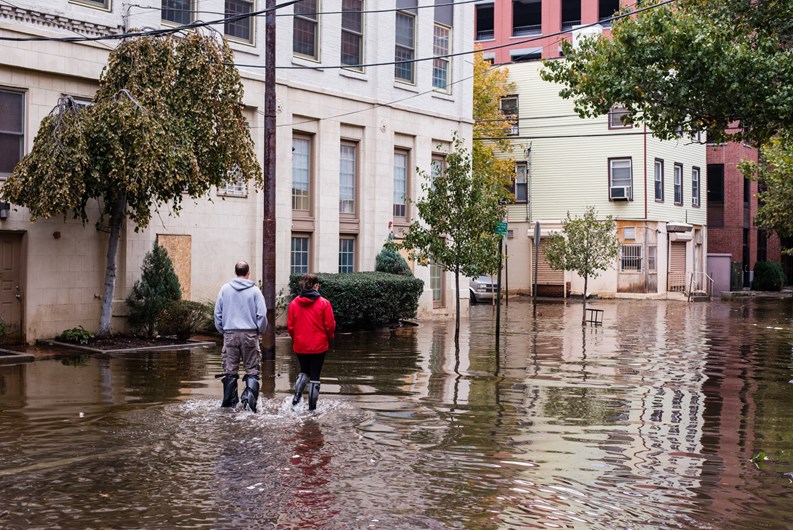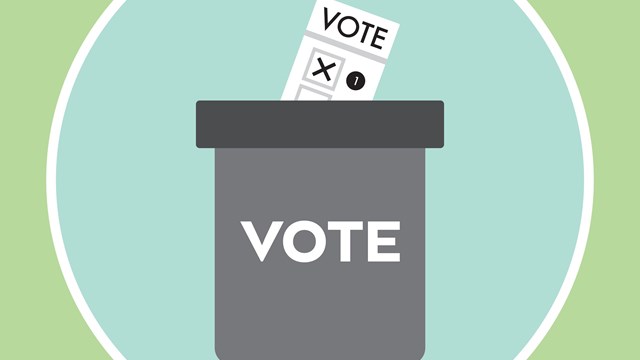It's hard to imagine that seven months from now, the fifth anniversary of Superstorm Sandy hitting the East Coast will be upon us. The memories of that day on October 29, 2012, and its immediate aftermath, are still vivid for those who survived the havoc and devastation. Who can forget what happened in New York, from the darkness that enveloped the lower part of Manhattan at night, to the loss of homes on Staten Island.
New Jersey also suffered the brunt of Sandy as well, including significant housing damage—an issue that is still ongoing for homeowners nearly five years after the storm. Multifamily complexes such as condos weren't immune from Superstorm Sandy, especially the ones that were close to the water. As part of a larger article due out in The Cooperator and The New Jersey Cooperator about Sandy five years later, a New Jersey property manager discussed what he faced when his company took over condominiums that were impacted by the storm.
Memories of Chaos
According to a 2013 report titled “Community Development Block Grant Disaster Recovery Action Plan,” by the New Jersey Department of Community Affairs, 40,466 homeowners' primary residences suffered either “severe” or “major damage,” based on HUD standards (As of this writing. there was no data available on how many of those affected residences were multifamily properties). The report also broke down the nine areas of Jersey who suffered severe or major housing damage: Atlantic (16%), Bergen (5%), Cape May (4%), Essex (1%), Hudson (8%), Middlesex (4%), Monmouth (20%), Ocean (40%) and Union (1%) Counties, all in all accounting for 98 percent of major and severe damage throughout the state.
John Valkos, property manager at DSV Property Management in Atlantic Highlands, remembers first hand of the chaos and confusion following Sandy. “Most of our properties are along the water,” he says. “There's still a lot of recovery going on and funds are limited. We have been brought into condo complexes that ran into problems due to lack of insurance and poor Sandy repairs.” Valkos says his wife Cynthia, who is the owner of DSV Property Management, examined how these complexes were insured. “We found one complex that wasn’t properly insured according to their bylaws. They were insured cents on the dollar and were not able to finish the rebuild.”
According to Valkos, his management company was brought in two-and-a-half years after the storm to help a condominium complex in the Jersey Shore area. “They not only sustained flooding and damage to the first floor units but to the common hallways,” he says. “This complex was also under insured and overcharged by contractors. With great progress, work has begun and continues today to bring this association whole.
“Another association we were brought into had quotes three times over the amount they should have been charged,” Valkos continues. “After rebidding the project, there was enough money saved from the insurance to put aside for unforeseen Sandy repairs. An example of these repairs is we had to rebuild a sand dune, which is the first line of protection for a building. We filed emergency permits because we were getting back into the next hurricane season. So it wasn't only rebuilding the buildings, it was also rebuilding protection for the community."
The Recovery Today So Far...
In New Jersey, there have been programs, some of which have now expired, to help homeowners. One of them, Reconstruction, Rehabilitation, Elevation and Mitigation (RREM), assisted eligible homeowners with grant awards to facilitate home repair and rehabilitation. Another program called LMI Homeowners Rebuilding offered reconstruction, rehabilitation and elevation help to low-to-moderate-income homeowners. And the Sandy Homebuyer Assistance Program distributed interest-free, forgivable loans up to $50,000 to eligible homebuyers to buy a home in the nine impacted areas.
In a press release from October 2016, New Jersey Gov. Chris Christie's administration announced that the state was making progress in the rebuilding effort for housing. It said that $1.6 billion in federal housing assistance had been distributed to help rebuild homes and rental units. The administration also said that of the 7,600 homeowners who participated in the RREM program, 4,300 of them have completed construction on their homes, while another 1,400 have returned home as construction was being completed. Under the state's Blue Acres Program, homeowners were given the option of selling their properties damaged by Sandy at pre-storm values, and the state has set aside more than $300 million for buyouts; so far 634 sellers accepted them. There have been 541 property closings and the demolition of 412 properties under that program, said the administration.
But in the minds of New Jersey Sandy survivors, the recovery effort has been frustrating when they told state officials about the slow process, NJ.com reported on Oct. 27, 2016. "We need to finish the job because these funds were supposed to make people whole and we're just too far away...from making sure that happens," said Adam Gordon, associate director of the Fair Share Housing Center.
After what he experienced in working with Sandy-impacted homes, Valkos recommends a couple of things in the event of impending natural disasters. “Be sure to have the proper insurance and cover your residents,” he says. “Read your bylaws when it comes to insurance. You're going to look for the best policy and agent, but it is important to have your complex covered for what's needed. Make sure that the management company has the right contractor for the job at hand. Finally, it is important that you have a management company that is capable of handling emergencies in case a disaster happens.”
Read more about Sandy's impact on housing in New York and New Jersey as we approach the five-year anniversary--and the recovery effort--in next month's issues of The Cooperator and The New Jersey Cooperator.
David Chiu is an associate editor at The Cooperator.







Leave a Comment